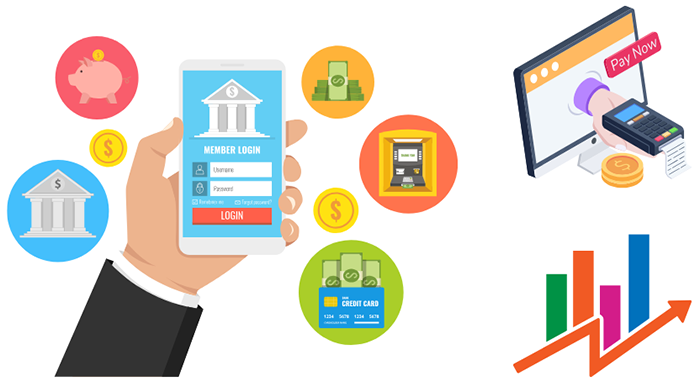Business Loans
Common SBA Loan Mistakes to Avoid
Avoiding costly errors during the SBA loan process starts with knowing where most applicants go wrong, this guide helps you prepare better, apply smarter, and stay compliant.
- Dileep K Nair
- July 9, 2025
Table of Contents
SBA Loan Mistakes
Small Business Administration (SBA) loans are a popular choice among entrepreneurs and business owners looking for affordable financing with flexible terms. These loans are backed by the U.S. government and are designed to support small businesses that may not qualify for traditional bank financing.
However, even though SBA loans offer significant advantages, many applicants make critical errors during the application process or in how they manage the loan afterward.
These SBA loan mistakes can delay approval, reduce the chances of securing funding, or cause future issues in compliance or repayment.
This guide explains the most common SBA loan mistakes, and more importantly, how to avoid them.
Whether you’re applying for a 7(a), 504, or Microloan, understanding these issues in advance will help you prepare a stronger application and manage your loan more effectively once it is approved.

✅ 1. Applying Without Understanding the Loan Program
One of the most common SBA loan mistakes is applying without fully understanding the loan program or its purpose.
SBA loans come in different types—each designed for specific business needs.
For example:
- SBA 7(a)loans are flexible and used for working capital, expansion, equipment, or business acquisition.
- SBA 504loans are intended for purchasing fixed assets like real estate or machinery.
- SBA Microloansare best suited for startups and very small businesses needing under $50,000.
Applying for the wrong loan or misunderstanding its purpose can lead to denial or delays. Before applying, research which loan aligns with your funding needs and long-term goals.
Carefully review eligibility requirements, maximum loan amounts, and approved uses of funds.
✅ 2. Submitting Incomplete or Disorganized Documentation
Documentation is a core part of any SBA loan application. Yet, many applicants submit incomplete or disorganized materials, which leads to application delays or rejections.
This includes:
- Missing tax returns
- Outdated financial statements
- Forms not signed or fully completed
- Discrepancies between documents
Each SBA loan program has specific documentation requirements, including SBA Forms 1919, 912, 413, business tax returns, profit and loss statements, a balance sheet, and more.
Submitting documents in a neat, complete, and organized manner shows lenders that you are professional and prepared.
A good practice is to use a checklist before submission and label all files clearly. Also, keep a digital and hard copy of everything for your records.
✅ 3. Underestimating the Importance of Personal Credit
Many borrowers focus only on their business finances and overlook the role of personal credit. This is a common and costly SBA loan mistake.
The SBA and its lenders assess both the business’s financial health and the personal credit history of all major owners (usually anyone with 20% or more ownership).
A low personal credit score, recent defaults, or unresolved delinquencies can raise concerns, even if your business is strong.
Make sure to:
- Check your personal credit score before applying
- Pay down outstanding debts if possible
- Address any errors in your credit report
- Be transparent with the lender about past issues, and show what steps you’ve taken to improve
Strong personal credit builds trust with the lender and supports your application, especially for newer businesses.
✅ 4. Failing to Clearly Explain the Use of Funds
Lenders want to know exactly how the loan funds will be used. Many applicants make the mistake of giving vague or overly general explanations, such as “for business growth” or “for expansion.”
Instead, be specific and detailed:
- “$20,000 for purchasing inventory”
- “$15,000 for website development and marketing”
- “$65,000 for upgrading production equipment”
Include vendor quotes, cost breakdowns, or financial projections where possible.
A well-documented and realistic use of funds shows that you’ve planned carefully and increases the lender’s confidence in your ability to use the money effectively.
✅ 5. Ignoring the SBA’s Affiliation Rules
The SBA considers business affiliations when determining loan eligibility. This includes any ownership or control relationships between your business and other entities.
One of the more technical SBA loan mistakes is failing to disclose these affiliations properly. For example:
- Owning a significant share in another business
- Sharing management, operations, or finances with another entity
- Being part of a franchise or holding company
If not disclosed correctly, these affiliations can cause confusion or lead to ineligibility due to SBA size standards.
Be honest and transparent, and consult your lender if you’re unsure whether a relationship qualifies as an affiliation.
✅ 6. Overlooking Collateral and Guarantee Requirements
While the SBA does not require full collateral in every case, lenders are still expected to secure the loan whenever possible, especially for larger amounts.
One mistake borrower make is assuming that no collateral is needed, or refusing to pledge available assets.
If you have valuable business assets, or even personal property, be prepared for the lender to ask for them as security.
Also, understand that SBA requires personal guarantees from any owner with 20% or more interest in the business.
This is standard across SBA loan programs. Not understanding or accepting this upfront can slow the process or lead to application withdrawal.
✅ 7. Providing Unrealistic or Incomplete Financial Projections
For startups and new businesses, financial projections are a key part of the SBA loan evaluation.
A common mistake is to provide projections that are either too optimistic or not well-supported.
For example, projecting that your revenue will double in six months without a clear marketing plan, customer base, or industry trend can seem unreliable.
Lenders are not looking for high numbers- they are looking for credibility and logic.
To improve your projections:
- Base them on actual market research
- Use conservative estimates
- Include written assumptions to explain the numbers
- Show how the loan will contribute to increased revenue or efficiency
Quality projections show the lender that you understand your business model and have a realistic plan to generate income and repay the loan.
✅ 8. Choosing the Wrong Lender or Advisor
Not all lenders are the same. Some have more SBA experience, faster processing, or specific focus areas like real estate or startups.
Working with the wrong lender, or a consultant who lacks SBA knowledge, can result in confusion, delays, or denied applications.
Choose a lender who:
- Regularly handles SBA loans
- Understands your industry or business type
- Offers clear communication and a checklist of requirements
- Has experience with your specific loan program (7(a), 504, etc.)
Similarly, if you are working with a loan advisor or consultant, make sure they have verifiable experience with SBA financing.
A knowledgeable partner can help you avoid many common SBA loan mistakes and streamline your path to approval.
✅ 9. Rushing the Application Process
Rushing is one of the most avoidable yet damaging SBA loan mistakes. In a hurry to get funded, some applicants submit documents with errors, skip sections of forms, or overlook key lender requests.
An SBA loan takes time. It often involves multiple stages, including prequalification, underwriting, document review, and final approval.
Being thorough and patient at each step is better than trying to finish quickly and making mistakes that could lead to delays or rejection.
Create a timeline, understand the process, and respond to your lender’s requests promptly. A well-paced, complete application often gets approved faster than a rushed one.
✅ 10. Failing to Follow Up After Submission
A common yet often overlooked SBA loan mistake is failing to follow up after submitting your loan application.
Many applicants assume that once the documents are submitted, they only need to wait. In reality, SBA loan processing often involves multiple stages of review, clarification, and additional documentation requests.
Lenders may contact you to verify financial details, request missing forms, or ask for supporting documents. If you don’t respond promptly, it can delay the process or even lead to withdrawal of your application due to inactivity.
Always stay available via phone and email. Set reminders to check in with your loan officer if you haven’t heard back within a reasonable time.
📌 Conclusion
SBA loans are an excellent option for small businesses, but only if approached with preparation and care. The mistakes outlined above are common, but they are also avoidable.
By understanding the process, submitting accurate documentation, explaining your business clearly, and working with experienced partners, you can improve your chances of success.
Avoiding SBA loan mistakes doesn’t require a perfect business. It requires attention to detail, realistic planning, and open communication with your lender.
❓ Frequently Asked Questions (FAQs) – SBA Loan Mistakes
Several mistakes can disqualify an applicant from receiving an SBA loan, especially if they involve legal, financial, or compliance issues. These include providing false or incomplete information, hiding ownership affiliations, submitting forged or unverifiable documents, or failing to disclose criminal history or delinquent federal debts.
Additionally, applying for a loan outside the allowed use of funds, such as funding passive investments or personal debt, can also result in disqualification.
In some cases, disqualification occurs because the business is not considered small under SBA size standards or is involved in prohibited industries. To avoid this, applicants must be honest, transparent, and well-prepared with proper documentation.
To avoid delays in your SBA loan application, start by organizing all required documents before submitting your application. Use a checklist to ensure nothing is missing.
Make sure your financial statements are up to date, your tax returns are complete, and all SBA forms are signed and accurate.
Respond to your lender’s follow-up questions or requests as quickly as possible. It also helps to work with a lender experienced in SBA loans who can guide you through the documentation and underwriting process.
Clear communication, attention to detail, and timely responses all help to move the application forward efficiently.
Using SBA loan funds for purposes not allowed under the loan agreement is a serious mistake that can lead to legal and financial consequences.
SBA loan funds must be used for approved business purposes only, such as working capital, equipment purchases, inventory, or real estate (depending on the loan type).
If funds are used for personal expenses, speculative investments, or to pay off unrelated debts, the SBA and lender may consider it a breach of contract.
This could trigger immediate repayment demands or affect your ability to apply for future SBA funding. Always follow your loan agreement and consult your lender before making any questionable expenditures.
Yes, even a strong business can be denied an SBA loan if certain key factors are overlooked. For instance, a business with good revenue and market presence might still be denied if the owner has poor personal credit, fails to submit proper documentation, or applies for the wrong loan program.
Likewise, if the business is missing required licenses or fails to meet SBA affiliation or size standards, the application may not proceed.
A strong business improves your chances, but approval depends on the full application, creditworthiness, transparency, use of funds, and SBA compliance all matter.
Yes, choosing the wrong loan consultant or advisor is a surprisingly common SBA loan mistake.
Not all consultants understand SBA-specific requirements, forms, or timelines. Some may give poor advice, misrepresent your qualifications, or submit incomplete applications on your behalf.
Others may charge high fees without delivering real value. If you choose to work with a consultant, make sure they have verifiable experience in SBA loan preparation, know the documentation process thoroughly, and are willing to help you stay compliant at every stage.
The right advisor can improve your chances; the wrong one can delay or damage your application.



